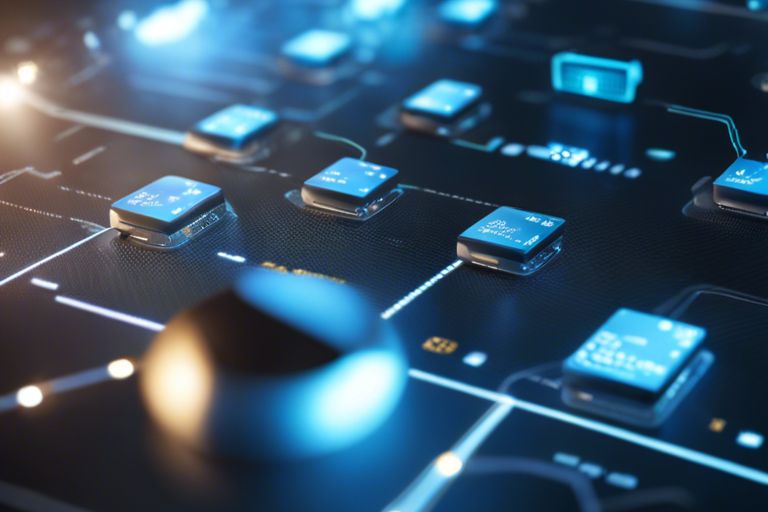Delve into the vanguard of innovation and discovery as we uncover the revolutionary technologies that are shaping the future. From artificial intelligence and quantum computing to biotechnology and blockchain, the realm of emerging technologies holds immense potential to transform societies and industries. In this blog post, we will take a closer look at some of the most promising and disruptive technologies that are set to revolutionize the way we live, work, and interact in the coming years.
Artificial Intelligence and Machine Learning
Before diving into the intricacies of Artificial Intelligence (AI) and Machine Learning (ML), it is essential to understand the dynamic landscape these technologies operate in. AI refers to simulated intelligence in machines that mimic human cognitive functions such as learning and problem-solving. On the other hand, ML is a subset of AI that enables machines to learn from data without being explicitly programmed. As these technologies continue to advance, their applications across various industries are reshaping the future of work and productivity.
Deep Learning Breakthroughs
Any discussion on AI and ML is incomplete without acknowledging the significant breakthroughs in Deep Learning. This subset of ML focuses on algorithms called artificial neural networks, inspired by the structure and function of the human brain. Deep Learning has revolutionized tasks such as image recognition, speech recognition, and natural language processing, achieving unprecedented accuracy levels. With the continuous improvement of hardware capabilities and training data availability, Deep Learning is expected to drive further innovation across industries.
Automation technologies are rapidly advancing, powered by AI capabilities that enable machines to perform tasks that typically require human intelligence. In the field of automation and robotics, AI plays a crucial role in enhancing efficiency, precision, and decision-making. From autonomous vehicles to robotic process automation, AI integration is streamlining operations and driving productivity gains for businesses.
AI in Automation and Robotics
This integration of AI in Automation and Robotics is not without challenges. Concerns around job displacement and ethical considerations in autonomous decision-making processes have sparked debates on the societal implications of increasing automation. However, the benefits of AI in enhancing safety, scalability, and efficiency in automated systems outweigh the risks. It is essential for stakeholders to navigate these complexities responsibly as AI continues to revolutionize the automation landscape.
Blockchain Technology
If you have heard about blockchain technology, you probably associate it with cryptocurrencies like Bitcoin. However, blockchain technology is much more than just a platform for digital currencies. At its core, blockchain is a decentralized, distributed ledger that records transactions across a network of computers. Each transaction is securely encrypted and linked to the previous one, creating a chain of blocks – hence the name blockchain.
Cryptocurrencies and Beyond
Beyond its initial application in cryptocurrencies, blockchain technology is revolutionizing various industries. It offers a secure and transparent way to record transactions, exchange assets, and establish contracts without the need for intermediaries. Smart contracts, for example, are self-executing contracts with the terms of the agreement directly written into code, ensuring automatic execution once conditions are met. This technology has the potential to streamline processes, reduce costs, and minimize fraud across sectors such as finance, supply chain management, healthcare, and more.
Enhancing Security and Transparency
For businesses and organizations, blockchain technology provides a new level of security and transparency. The decentralized nature of blockchain ensures that data is stored on multiple computers, making it nearly impossible for hackers to manipulate or corrupt information. Additionally, the transparent and tamper-proof nature of blockchain can help in auditing processes, tracking goods in the supply chain, and verifying the authenticity of documents.
To further enhance security and transparency, some companies are exploring the use of blockchain for identity management. By storing identity information on a blockchain, individuals can have more control over their personal data and how it is shared with third parties. This can help reduce identity theft and provide a more secure way to verify identities online.
Quantum Computing
After years of research and development, quantum computing has emerged as one of the most promising technologies of the future. With the potential to revolutionize industries and solve complex problems at speeds unimaginable with classical computers, quantum computing holds the key to unlocking new possibilities in fields such as cryptography, drug discovery, and optimization.
Understanding Quantum Mechanics
For those new to the concept, quantum mechanics forms the foundation of quantum computing. Unlike classical computers that encode information in binary digits (bits) of zeros and ones, quantum computers use quantum bits or qubits. Qubits can exist in multiple states simultaneously, thanks to the principles of superposition and entanglement.
Furthermore, qubits can perform operations on these states simultaneously, leading to exponential computational power. This unique ability allows quantum computers to tackle complex problems that are practically impossible for classical computers to solve efficiently with current technologies.
Quantum Computing in Practice
With the advancements in quantum computing research, companies like IBM, Google, and Microsoft are racing to develop practical quantum computers. These machines have the potential to break conventional encryption methods, revolutionize artificial intelligence, and accelerate scientific discoveries in ways that were previously unimaginable.
The integration of quantum computing in various industries is still in its infancy, but the potential applications are vast. From optimizing supply chains and financial portfolios to designing new materials and drugs, quantum computing holds the promise of transforming the world as we know it.
The implications of quantum computing are immense. It has the power to disrupt industries, improve efficiency, and drive innovation at an unprecedented pace. However, with great power comes great responsibility.
The Internet of Things (IoT)
To truly understand the impact and potential of the Internet of Things (IoT), one must delve into how this network of interconnected devices is revolutionizing various industries and aspects of daily life. The IoT refers to the connection of everyday objects to the internet, enabling them to send and receive data. This technology is rapidly advancing, transforming the way we live, work, and interact with our surroundings.
Smart Cities and Smart Homes
Any discussion about the IoT is incomplete without mentioning its role in shaping smart cities and smart homes. In smart cities, IoT devices are used to enhance efficiency in traffic management, energy usage, waste disposal, and overall city planning. Smart homes leverage IoT technology to automate and control various household systems such as lighting, heating, security, and entertainment, offering convenience and energy savings to residents.
Any technological advancement brings with it a mix of benefits and challenges, and the IoT is no exception. Privacy and security concerns regarding the vast amounts of data being collected by IoT devices are at the forefront of discussions. Additionally, the need for standardization and interoperability among devices to ensure seamless connectivity remains a key issue in the widespread adoption of IoT technology.
IoT in Healthcare
Any exploration of the IoT’s potential would be incomplete without examining its impact on healthcare. In this sector, IoT devices are transforming patient care, remote monitoring, and medical diagnostics. The ability to gather real-time data through wearable devices and sensors allows for more personalized and proactive healthcare interventions, leading to improved patient outcomes.
For instance, IoT-enabled medical devices can continuously monitor a patient’s vital signs and detect any anomalies, enabling healthcare providers to intervene promptly. However, with this connectivity comes the risk of data breaches and cyberattacks on sensitive patient information, highlighting the critical need for robust security measures in healthcare IoT systems.
Biotechnology
Not only has biotechnology revolutionized the way we approach medicine and agriculture, but it has also opened up a world of possibilities in various other industries. By harnessing the power of living organisms, biotechnology has paved the way for groundbreaking innovations that have the potential to shape the future.
Genetic Engineering and CRISPR
On the forefront of biotechnology lies genetic engineering and the revolutionary technology known as CRISPR. Genetic engineering allows scientists to manipulate the genetic material of living organisms, enabling them to create genetically modified organisms with specific traits. CRISPR (Clustered Regularly Interspaced Short Palindromic Repeats) is a game-changing technology that allows for precise editing of genes, offering unparalleled control over the genetic makeup of organisms.
Breakthroughs in Biopharmaceuticals
On the other hand, breakthroughs in biopharmaceuticals have transformed the landscape of medicine. CRISPR technologies have enabled the development of innovative therapies for genetic disorders, cancer, and other diseases. These biopharmaceuticals offer targeted treatments that can potentially cure previously incurable conditions, marking a significant advancement in the field of medicine.
The development of biopharmaceuticals has not only revolutionized the way we treat diseases but has also provided hope for patients who previously had limited treatment options. With advancements in biotechnology, the possibilities for developing personalized medicine tailored to individual patients are becoming a reality, offering a glimpse into a future where healthcare is more effective and accessible.

Summing up
From above, it is evident that exploring top emerging technologies is crucial in unlocking their full potential across various industries. By understanding the capabilities and applications of these technologies such as AI, blockchain, IoT, and 5G, businesses can adapt and thrive in a rapidly evolving digital landscape. Embracing these innovations can lead to increased efficiency, productivity, and competitiveness in the global market. Therefore, it is imperative for organizations to stay informed and proactive in leveraging these technologies to drive growth and success in the future.
FAQ
Q: What is the significance of exploring top emerging technologies?
A: Exploring top emerging technologies is crucial as it helps businesses stay innovative, competitive, and relevant in today’s rapidly evolving digital landscape.
Q: What are some examples of top emerging technologies?
A: Top emerging technologies include artificial intelligence (AI), Internet of Things (IoT), blockchain, virtual reality (VR), and 5G technology.
Q: How can businesses unlock the potential of emerging technologies?
A: Businesses can unlock the potential of emerging technologies by investing in research and development, fostering a culture of innovation, and collaborating with technology experts.
Q: What are the key benefits of integrating emerging technologies into business operations?
A: Integrating emerging technologies can lead to increased efficiency, enhanced customer experiences, improved decision-making, and new revenue streams for businesses.
Q: How can individuals stay updated on the latest trends in emerging technologies?
A: Individuals can stay updated on the latest trends in emerging technologies by following industry publications, attending tech conferences, participating in online courses, and networking with professionals in the field.
![]()












